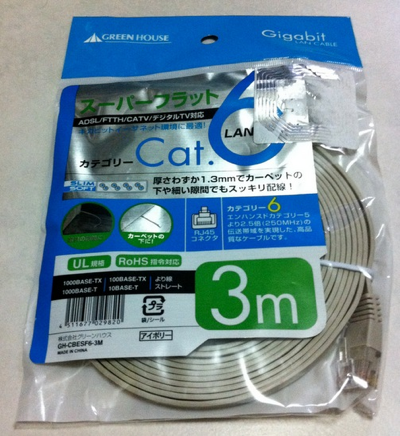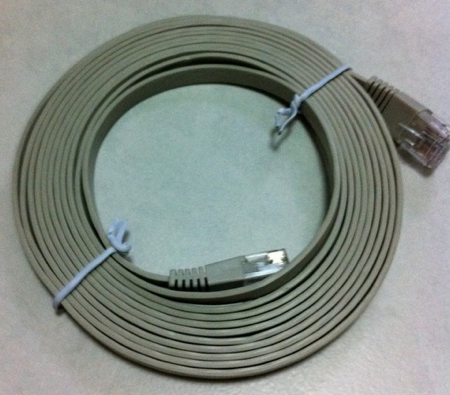In my last post I shared about reorganising my home “Server Farm”. In the latest line up of networking devices, I have ensured every single one of them are operating in Gigabit transfer speeds e.g. N Router, Switch, NAS, Homeplugs etc. As it would be hard to achieve the theoretical transfer speeds defined in all the devices but one of the foresaken item is the cabling. Usually the cables supplied as part of the networking devices are either CAT 5 or CAT 5e.
Thus, I replace them with the much thinner and flexible CAT 6 cables. Particularly for this brand, the thickness is mere few mm which is very important when one is organizing the network cabling & routing.


In case for those who are still new to CAT classification, I have extracted some writeup on each of them:
Cat 5: Out of the three types of cable we’ll be discussing, Category 5 is the most basic. Cat 5 cable is available in two varieties: Unshielded Twisted Pair (UTP), the type widely used in the United States, and Screened Twisted Pair (SCTP), which has shielding to provide a measure of extra protection against interference, but is rarely used outside of Europe. Cables belonging to Category 5 are either solid or stranded: Solid Cat 5 is more rigid, and the better choice if data needs to be transmitted over a long distance, while Stranded Cat 5 is very flexible and most likely to be used as patch cable. Cat 5 cable can support 10 or 100 Mbit/s Ethernet, and has a capability of up to 100 MHz.
Cat 5e: Cat 5e (which stands for Category 5, enhanced) cable goes along the same lines as basic Cat 5, except that it fulfills higher standards of data transmission. While Cat 5 is common in existing cabling systems, Category 5e has almost entirely replaced it in new installations. Cat 5e can handle data transfer at 1000 Mbit/s, is suitable for Gigabit Ethernet, and experiences much lower levels of near-end crosstalk (NEXT) than Cat 5.
Cat 6 : Category 6 is the most advanced and provides the best performance. Just like Cat 5 and Cat 5e, Category 6 cable is typically made up of four twisted pairs of copper wire, but its capabilities far exceed those of other cable types because of one particular structural difference: a longitudinal separator. This separator isolates each of the four pairs of twisted wire from the others, which reduces crosstalk, allows for faster data transfer, and gives Category 6 cable twice the bandwidth of Cat 5! Cat 6 cable is ideal for supporting 10 Gigabit Ethernet, and is able to operate at up to 250 MHz. Since technology and standards are constantly evolving, Cat 6 is the wisest choice of cable when taking any possible future updates to your network into consideration. Not only is Category 6 cable future-safe, it is also backward-compatible with any previously-existing Cat 5 and Cat 5e cabling found in older installations.
Do check on the printed descriptions on the cable to verify the CAT status of the cable & attempt connectons.
Read other related posts:
Follow us on:
Share this article on:

